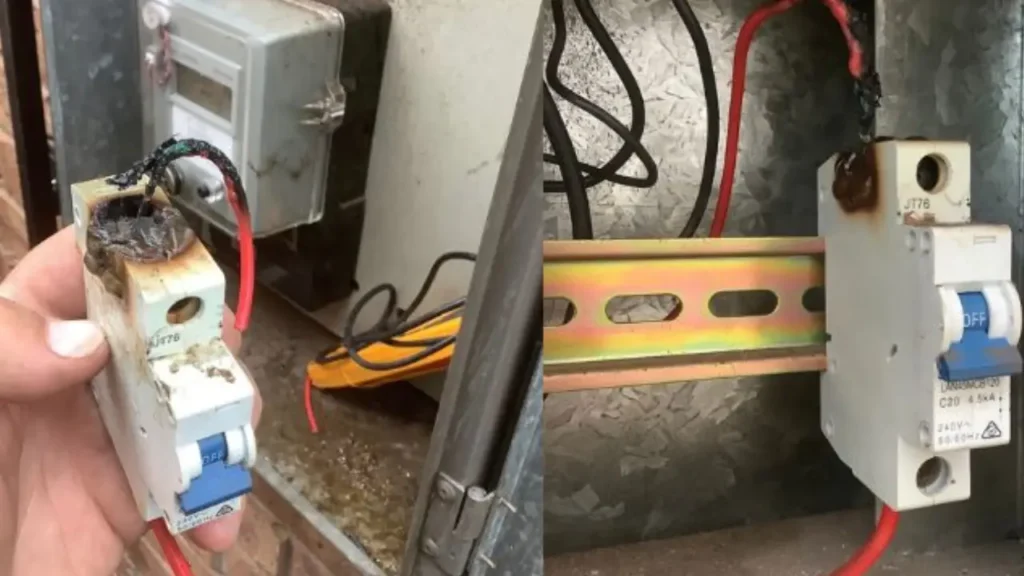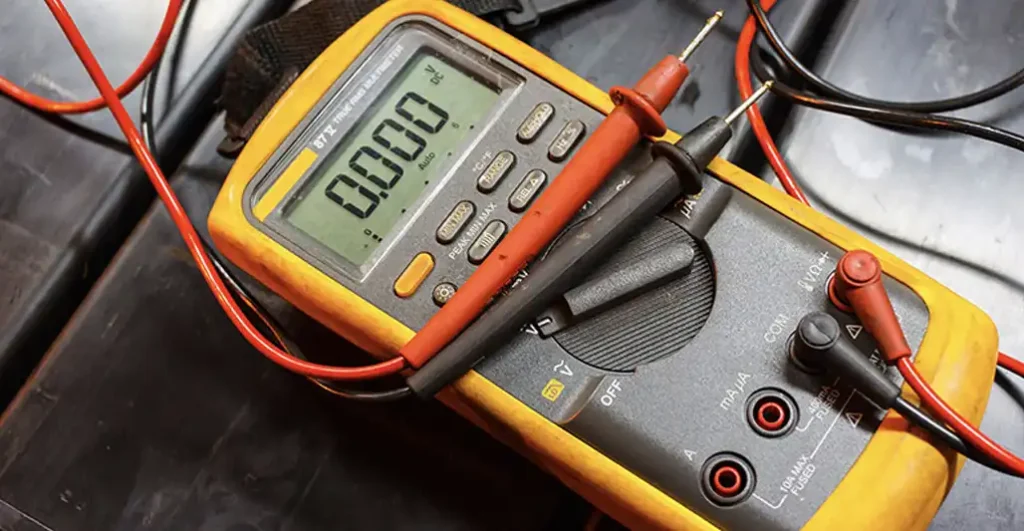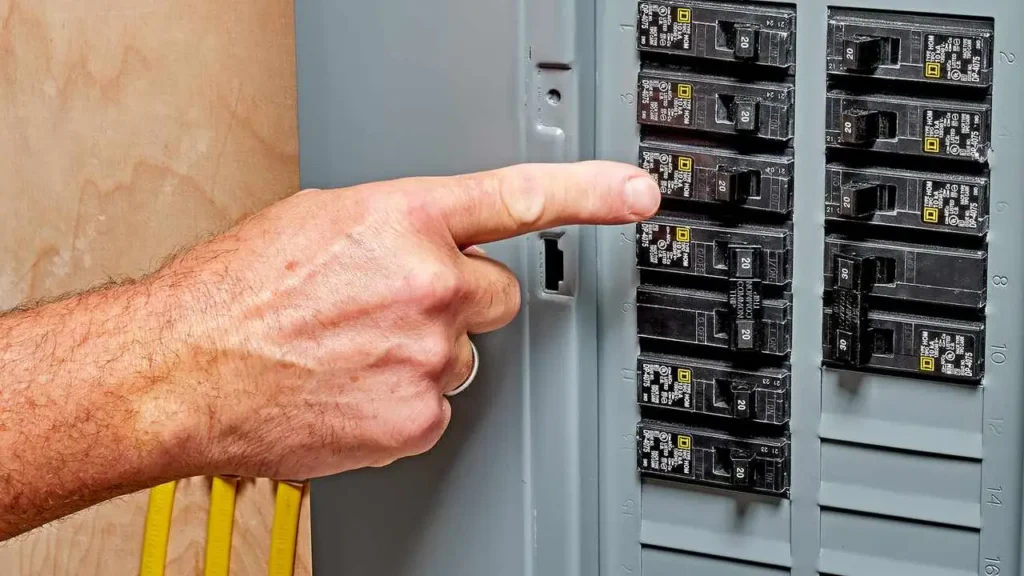Determining whether a circuit breaker is malfunctioning is vital for maintaining the safety and efficiency of your electrical system.
A faulty circuit breaker can lead to various issues, including power outages, electrical fires, and damage to appliances. However, identifying a bad circuit breaker requires careful observation and testing.
In this guide, we’ll explore the signs and symptoms of a bad circuit breaker and provide step-by-step instructions on how to assess its condition. Whether you’re experiencing frequent tripping, flickering lights, or other electrical anomalies, understanding how to tell if a circuit breaker is bad is essential for ensuring the reliability and safety of your home’s electrical infrastructure.
Can Circuit Breakers Go Bad?

Yes, circuit breakers can indeed go bad over time due to various factors such as age, wear and tear, overloading, and manufacturing defects. While circuit breakers are designed to provide protection against electrical overloads and short circuits, they are not immune to damage or failure themselves.
Here are some reasons why circuit breakers can go bad:
- Age: Like many electrical components, circuit breakers have a lifespan. Over time, the internal components of a circuit breaker may degrade, leading to decreased performance or failure.
- Wear and Tear: Circuit breakers experience mechanical wear and tear from regular use, particularly if they are frequently tripped or reset. This can lead to loosened connections, worn contacts, or other issues that affect the breaker’s functionality.
- Overloading: If a circuit breaker is repeatedly subjected to electrical overloads beyond its rated capacity, it can cause damage to the internal components or cause the breaker to trip more frequently. This can eventually lead to failure of the breaker.
- Short Circuits: Short circuits, which occur when electrical current flows along an unintended path, can cause sudden spikes in current that exceed the breaker’s capacity. This can damage the breaker’s internal mechanisms and render it ineffective.
- Manufacturing Defects: In rare cases, circuit breakers may have manufacturing defects that affect their reliability or performance. These defects may not be apparent initially but can manifest over time as the breaker is subjected to normal operating conditions.
- Environmental Factors: Circuit breakers installed in harsh environments or exposed to extreme temperatures, moisture, or contaminants may deteriorate more quickly than those in controlled environments, leading to premature failure.
While circuit breakers are generally reliable, it’s essential to be aware that they can degrade or fail over time. Regular inspection, maintenance, and testing of circuit breakers can help identify potential issues early and prevent electrical hazards. If you suspect that a circuit breaker is bad or not functioning correctly, it’s advisable to consult a qualified electrician to assess the situation and determine the appropriate course of action.
How to Tell if a Circuit Breaker is Bad

A circuit breaker is a critical component of your home’s electrical system, designed to protect against electrical overloads and short circuits. When a circuit breaker is functioning properly, it effectively interrupts the flow of electricity to prevent damage to your appliances, wiring, and the risk of electrical fires. However, like any electrical device, circuit breakers can develop faults over time due to various factors such as age, wear and tear, or manufacturing defects. Recognizing the signs of a bad circuit breaker is essential for maintaining the safety and reliability of your electrical system.
Broken Circuit Breaker Symptoms
Recognizing the symptoms of a bad circuit breaker is crucial for maintaining the safety and functionality of your electrical system. Here are some common bad circuit breaker symptoms to look out for:
Frequent Tripping:
One of the most common signs of a bad circuit breaker is frequent tripping. If a breaker trips frequently without any apparent reason, such as overloading or a short circuit, it may indicate a faulty breaker. While occasional tripping is normal, frequent tripping is a cause for concern and should be investigated.
Flickering Lights:
Flickering or dimming lights can be a symptom of an overloaded circuit or a faulty circuit breaker. If you notice lights flickering or dimming when appliances are turned on, it could indicate that the circuit breaker is struggling to handle the electrical load.
Burning Smell:
A burning or acrid smell coming from the electrical panel could indicate overheating or arcing within the circuit breaker. This smell may be accompanied by visible signs of damage such as scorch marks or melted insulation. A burning smell should be taken seriously and investigated immediately to prevent potential fire hazards.
Tripped Breaker Will Not Reset:
If a circuit breaker trips and refuses to reset, it could be a sign of internal damage or wear that prevents it from functioning correctly. Attempting to force the breaker to reset can exacerbate the problem and should be avoided.
Physical Damage:
Inspect the circuit breaker for any visible signs of physical damage, such as cracks, chips, or melted components. Physical damage can compromise the breaker’s ability to operate safely and should be addressed promptly.
Age of the Breaker:
Circuit breakers have a lifespan, typically ranging from 25 to 40 years. If your circuit breaker is approaching or exceeding its expected lifespan, it may be more prone to failure and should be inspected regularly for signs of wear or deterioration.
How to Test a Circuit Breaker

Testing a circuit breaker involves a series of steps to determine its functionality and identify any issues. Here’s how to test a circuit breaker:
Visual Inspection:
Begin by visually inspecting the circuit breaker for any signs of damage, such as burns, cracks, or melted components. Pay attention to the condition of the breaker and surrounding wiring.
Reset the Breaker:
If the breaker has tripped, attempt to reset it by switching it to the “Off” position and then back to the “On” position. Note whether the breaker resets without issue or if it immediately trips again.
Use a Multimeter:
A multimeter is a versatile tool that can be used to test the continuity and voltage of a circuit breaker. Set the multimeter to the continuity or resistance setting and place the probes across the terminals of the breaker. A reading of infinite resistance or no continuity indicates a faulty breaker.
Check Voltage:
Set the multimeter to measure voltage and test for voltage across the terminals of the breaker. If no voltage is present when the breaker is in the “On” position, it may indicate a wiring issue or a faulty breaker.
Test with Load:
Connect a known working device or appliance to the circuit controlled by the breaker and observe its operation. If the breaker trips immediately or the device does not function properly, it may indicate a faulty breaker.
How to Fix a Broken Circuit Breaker

Disclaimer:
Working with electrical systems can be dangerous. If you’re unsure about your abilities, it’s highly recommended to consult a qualified electrician. Incorrectly handling circuit breakers can lead to electrical shocks or fires.
Steps to Attempt a Fix (If You’re Confident):
- Safety First:
- Turn off the main breaker: This will de-energize the entire electrical system.
- Use a voltage tester: Verify that the circuit you’re working on is indeed dead.
- Identify the Faulty Breaker:
- Look for signs: These might include a tripped lever, a burnt smell, or visible damage.
- Test the circuit: If you’re unsure, try resetting the breaker. If it immediately trips again, it’s likely faulty.
- Reset the Breaker:
- Locate the reset button: It’s usually a small lever or button on the side of the breaker.
- Press the reset button: This will attempt to restore power to the circuit.
- Check for Problems:
- Inspect the breaker: Look for any signs of damage, such as scorch marks or loose wires.
- Test the circuit: Plug a device into the outlet controlled by the breaker. If it works, the problem may have been resolved.
If resetting the breaker doesn’t resolve the issue or if you find signs of damage, it’s time to call a professional electrician. They can safely diagnose the problem and make necessary repairs.
Remember: Even if you’re able to temporarily fix a breaker, it’s important to have it inspected by an electrician to ensure the underlying issue is addressed.
When to Replace a Circuit Breaker:
If you’ve determined that a circuit breaker is bad based on the signs and testing methods outlined above, it’s essential to replace it promptly to ensure the safety and reliability of your electrical system.
Replacing a circuit breaker should be done by a qualified electrician to ensure proper installation and compliance with electrical codes and regulations.
Additionally, if you’re experiencing frequent issues with multiple breakers or other electrical anomalies, it may be a sign of underlying issues with your electrical system that require professional attention.
Conclusion
Is your home or business plagued by frequent power outages or electrical malfunctions?
It could be a faulty circuit breaker. Don’t let these issues disrupt your daily life. Learn how to identify a bad circuit breaker and protect your property with our expert guidance.
Ready to upgrade your electrical system? Our high-quality, wholesale circuit breakers offer reliable performance and long-lasting durability. Order now and experience the difference.“